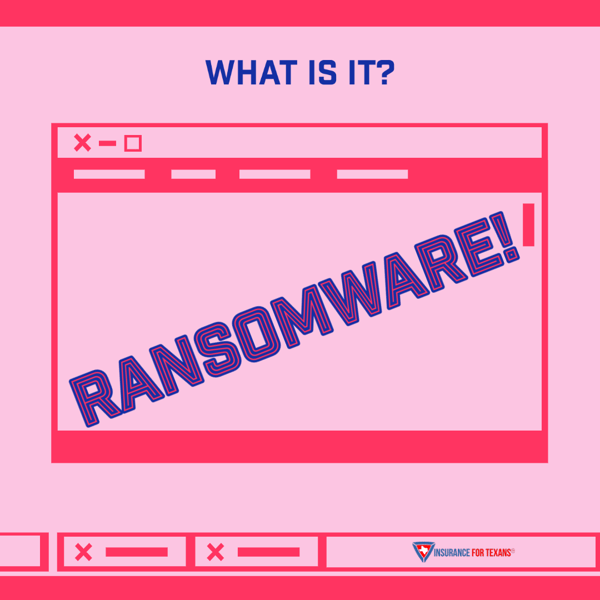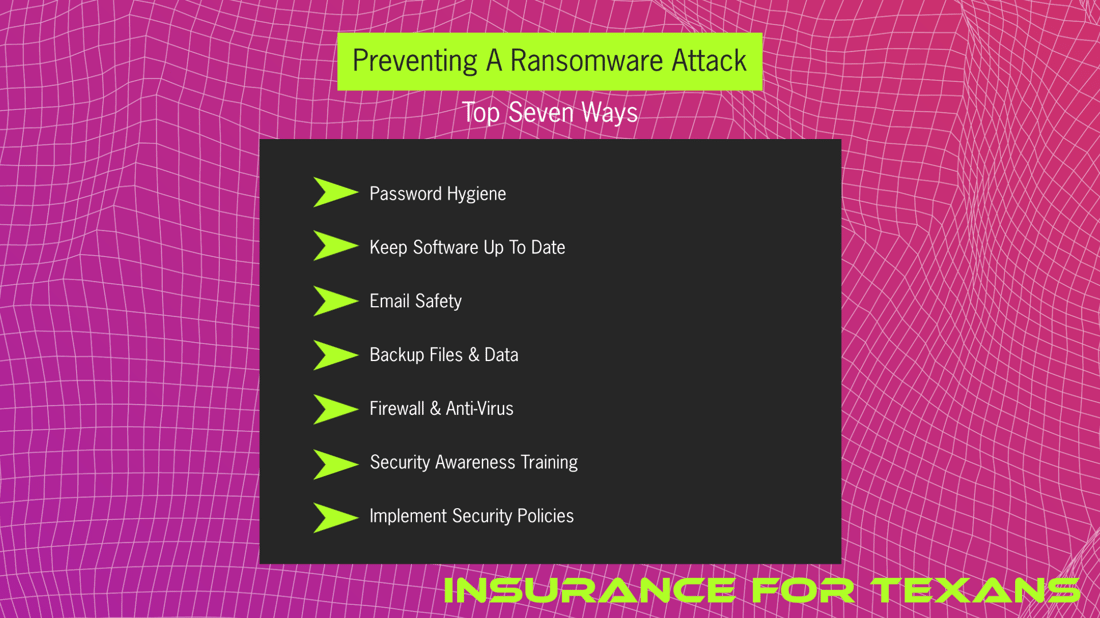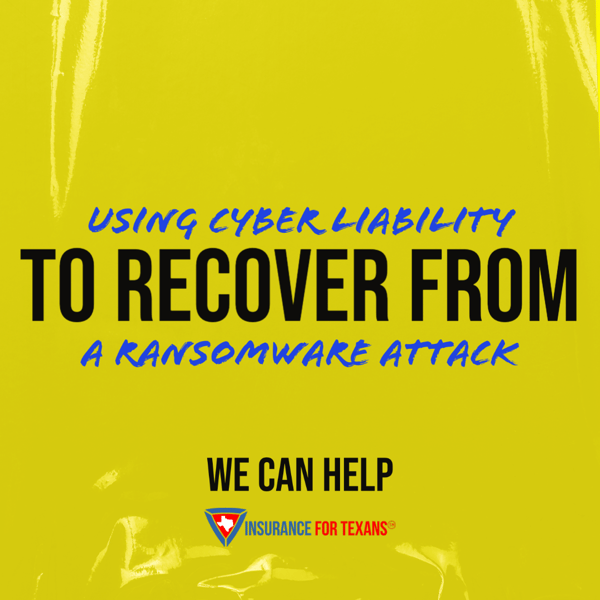A ransomware attack is a type of cyber attack in which a hacker infiltrates a computer system or network and encrypts the data, making it inaccessible to the victim. The hacker then demands a ransom from the victim in exchange for the decryption key, which is necessary to unlock the data and regain access to it.
Ransomware attacks can have severe consequences for individuals and organizations, as the encrypted data may include important documents, financial records, and other sensitive information. In some cases, the ransom payment demand may be exorbitant, and the victim may be forced to pay it in order to regain access to their data. In other cases, the victim may choose not to pay the ransom money, in which case they may lose access to their data permanently.

How Ransomware Attacks Occur
There are many ways that ransomware can be delivered to a victim's computer by online criminals. Below are some of the most common ways that online criminals are able to take advantage of your online security vulnerabilities and infiltrate your systems via a ransomware infection.
-
Phishing emails: Attackers often send emails with malicious attachments or links to potential victims. When the victim clicks on the attachment or link, the ransomware is downloaded onto their computer.
-
Malicious websites: Attackers may create fake websites that appear legitimate, but actually contain malware that can infect a visitor's computer.
-
Infected software downloads: Attackers may create fake software downloads that appear legitimate, but actually contain ransomware.
-
Drive-by downloads: Attackers may exploit vulnerabilities in a victim's web browser or operating system to download malware onto their computer without their knowledge.
-
Remote desktop protocol (RDP) attacks: Attackers may use brute force or other techniques to gain access to a victim's RDP, which allows them to remotely control the victim's computer.
-
Physical media: Cyber criminals may physically deliver a device, such as a USB drive, that contains ransomware to a victim.
Once the ransomware variant has been downloaded onto the victim's computer, it begins to encrypt the data on the hard drive and any connected devices, such as external hard drives or network drives. The victim may not be aware that the ransomware is running until the encryption is complete, at which point a message will be displayed on the victim's screen, demanding a ransom in exchange for the decryption key.
Ransomware Demands
The ransom demand is usually made in the form of cryptocurrency, such as Bitcoin, because it is difficult to trace and offers a high level of anonymity to the online criminal. The amount of the ransom demand can vary widely, from a few hundred dollars to thousands or even millions of dollars. Some attackers may include additional threats or demands, such as threatening to release the victim's data publicly or to sell it to other parties if the ransom is not paid.
It is important to note that paying the ransom does not guarantee that the attacker will provide the decryption key or that the data will be successfully recovered. Some attackers may simply take the ransom payment and then not provide the decryption key, leaving the victim with no way to regain access to their data. As such, it is generally not recommended to pay the ransom in the event of a ransomware attack.
Most victims have very little experience in IT or the negotiation skills to deal with online criminals. This is one area where having a preplanned ransomware infection response plan or cyber security expert available is vital for the resolution of the cyber attack against your business. If you do not have the resources available in your business one of the best options is a cyber liability policy which provides you access to the top cyber resources as a part of your policy premium.
Preventing A Ransomware Attack

With all cyber security measures, the best way to prevent an attack against your system is a strong defense. Implementing the following steps can help protect your entire organization or deter cyber criminals to find easier targets. Several steps that individuals and businesses can take to prevent ransomware attacks are:
-
Use strong passwords and practice good password hygiene: Use strong, unique passwords for all accounts, and enable two-factor authentication whenever possible. Avoid using the same password for multiple accounts.
-
Keep software and security systems up to date: Make sure that all software, including operating systems and antivirus programs, is kept up to date with the latest patches and security updates.
-
Be cautious when opening emails or downloading files from unknown sources: Be wary of emails or links from unknown sources, and do not click on suspicious attachments or links. Be especially careful when downloading software or files from the internet.
-
Regularly backup files and important data: Regular file backups of important data, such as documents, financial records, and other sensitive information. This will allow you to restore your data in the event of a ransomware attack or other data loss event.
-
Use a firewall and antivirus software: Use a firewall and antivirus software to protect your computer and network from external threats.
-
Use security awareness training: Provide security awareness training to employees to help them understand the risks of ransomware attacks and how to protect against them.
-
Implement security policies: Implement security policies, such as policies on email and internet usage, to reduce the risk of ransomware attacks.
In addition to these prevention measures, it is also important to have a plan in place for responding to a ransomware attack. This may include seeking the assistance of a cybersecurity expert, restoring the data from a backup, or implementing other recovery measures. It is also important to report the attack to the relevant authorities, including law enforcement, as this can help to track down the attackers and prevent future attacks.
Using Cyber Liability To Recover From A Ransomware Attack
Cyber liability insurance can be a useful tool for victims of ransomware attacks. Ransomware attacks can have severe consequences for businesses, including the loss of access to important data, damage to reputation, and lost revenue. Cyber liability insurance can help to cover the costs associated with recovering from a ransomware attack, such as the cost of hiring cybersecurity experts, restoring data from backups, and notification and credit monitoring services for affected customers.

If a business has cyber liability insurance, it may be able to use the coverage to pay for the following expenses related to recovering from a ransomware attack:
-
The cost of hiring cybersecurity experts: Cybersecurity experts may be needed to assess the damage caused by the ransomware attack, identify the source of the cyber attack, and implement measures to secure the business's systems and data from future cyber threats.
-
The cost of restoring data from backups: If a business has regularly backed up its data, it may be possible to restore the data from file backups (internal or external backups) after a ransomware attack. However, this can be a time-consuming and costly process.
-
Notification and credit monitoring services: If a ransomware attack results in the loss of customer data, the business may be required to notify affected customers and offer credit monitoring services to protect against identity theft.
-
Business interruption costs: A ransomware attack can disrupt business operations, leading to a loss of revenue. Cyber liability insurance can help to cover the costs of lost revenue and other expenses related to business interruption.
By purchasing cyber liability insurance, businesses can protect themselves against the financial consequences of a ransomware attack. It is important to carefully review the terms and coverage of a cyber liability insurance policy to ensure that it meets the specific needs of the business.
Looking For Assistance With Cyber?
As an independent Texas commercial insurance broker, Insurance For Texans can assist you with any questions regarding your cyber liability insurance questions. As part of our resources to our clients, we provide all clients with a cyber vulnerability assessment to discover potential cyber threats to your business's online systems. Once those issues are determined we can provide you with access to cybersecurity experts to resolve these matters on your behalf. If you are ready to discuss your cyber liability contact an agent with Insurance for Texans today.



